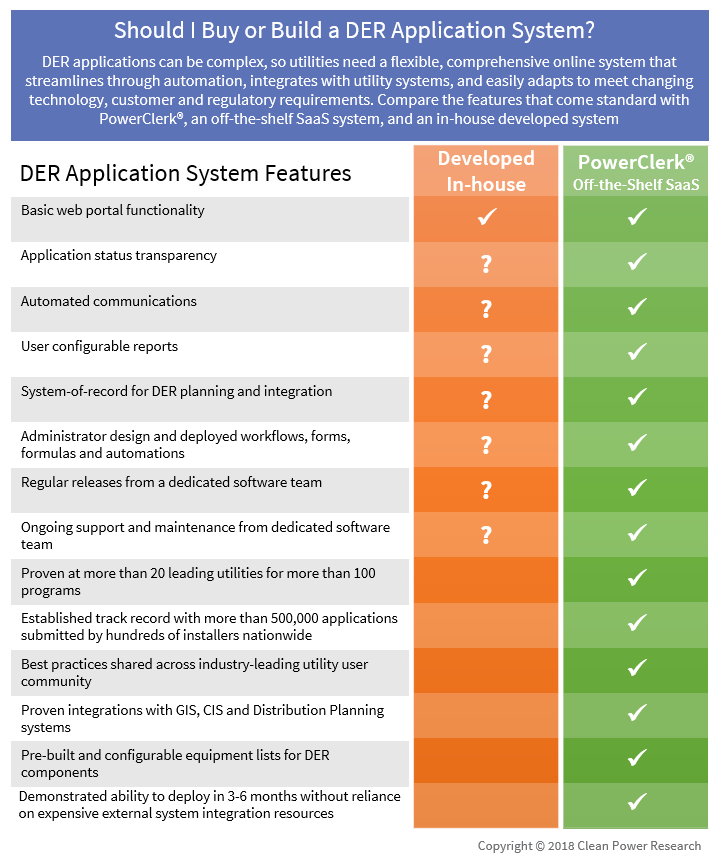The National Renewable Energy Laboratory (NREL) recently released their independent study on “Improving Interconnection Processes with Online Application Processing Systems” for distributed energy resources (DERs). As DERs become even more prevalent, the toll on internal utility resources to manage the application process is driving more and more utilities to automate application processes wherever possible.
The NREL report details the “why” and the “how” for online DER application processing systems. The why is increasingly apparent for most utilities, with key reasons including: reduced processing time; improved transparency and customer service; and enhanced DER data quality. As for the how, most utilities will select an off-the-shelf software application, while a few will consider a build-it-yourself project.
The report describes how a couple of large California utilities built their own systems in the early days of high-volume interconnection applications. In one case, development costs included 12 full-time employees totaling 18,000 people-hours for a $2.1 million initial investment. In the other case, initial costs were at least $1.5 million for a project with a 2+ year deployment.
As most utilities know by now, initial costs do not come close to capturing the full lifetime cost of an IT project like this. New regulations and new technologies will drive new application requirements and system upgrades. These can be resource hogs for a typically constrained utility IT group—especially with a custom application. As an example, the report references 13 updates over a 14-month period for one of the build-it-yourself utilities.
Fortunately, the NREL report highlights an alternative path: selecting an off-the-shelf SaaS application such as PowerClerk®. As the report outlines, more than 20 utilities are now using PowerClerk to manage their DER interconnection processes. This includes utilities of all sizes such as industry leaders Southern California Edison and Duke Energy, as well as three out of six investor-owned utilities in New York State (including Orange and Rockland) that are using PowerClerk to meet NY REV interconnection process requirements.
Utilities choosing an off-the-shelf path with PowerClerk achieve several benefits:
- Reduced impact on in-house IT to create and maintain the system
- Peer utility best practices continuously incorporated into the application system
- Deployment timelines of a few months as opposed to years with in-house projects
The table below highlights these and other benefits of choosing a SaaS application.

The rapid evolution of DER interconnection requirements further speaks to the value of an off-the-shelf SaaS application. From our PowerClerk customers, we see increasing interest in integration with existing utility systems to further automate the interconnection process. Common integrations include customer information systems (CIS), geographical information systems (GIS), payment processing systems and distribution planning tools such as CYME, EDD DEW, Synergi Electric and EPRI DRIVE.
Check out the NREL Report for more details!
